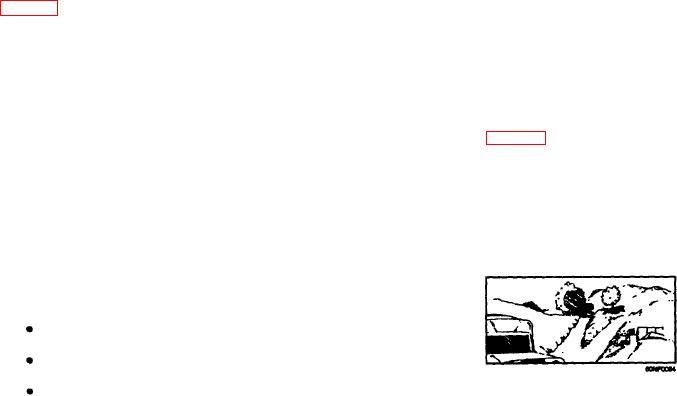
Continue to March
permits greater highway speeds with safety and
provides for greater flexibility in highway use.
The mission and/or terrain may dictate that the
However, open columns make control more difficult for
march continue. If this is the case, the convoy speed
the convoy commander when it is necessary to give
should be increased. Continuing the march offers the
orders to stop, to continue, to disperse and seek
advantage of preventing a moving target and making
concealment, or to engage aircraft. Moreover, the
column is more likely to be attacked since it is exposed
it more difficult for the enemy to hit. Disadvantages
exist in that detection is easier and volume and density
for a longer period of time. If attacked, its defense is
of small-arms fire are reduced.
less effective because small-arms fire is less
concentrated.
Stop the Convoy
3. Infiltration. In infiltration formations,
vehicles are dispatched as follows:
If the convoy commander chooses to halt the
a. Individually
convoy, the vehicles simply pull to the shoulders of
the road. This technique has several advantages:
b. In small groups
c. At irregular intervals
1. Harder for the pilot to see the convoy.
d At a rate that minimizes changes in the
2. Easy to continue the march.
average traffic density and prevents massing of vehicles
3. Volume and density of organic weapons will be
greater than if the convoy disperses.
Average distance between vehicles and groups is
decided by the rate at which vehicles are dispatched.
However, a disadvantage exists in that a convoy
Deception is provided by intermingling various types
stopped on the open road makes a good target for
of vehicles and by permitting passing within the
enemy troops. The enemy has a better chance of
column. Infiltration may provide the best passive
causing serious damage.
defense against hostile observation and attack;
however, it provides the least active defense capability
Disperse the Convoy
if individual or small groups of vehicles are attacked.
This method permits individual vehicles to travel at
A simple technique that a convoy commander can
high speeds and cause less cross traffic interference.
use in dispersing vehicles is to establish a method in
It permits use of a route on which heavy traffic
Standard Operating Procedures (SOPs). SOPs will
normally precludes the entire unit moving at one time
emphasize that in case of an air attack odd-numbered
vehicles go to the left, and even-numbered vehicles go
to the right. The key to dispersion is not to make two
straight lines out of what was one long line; the
PASSIVE REACTIONS TO
vehicles must be staggered. This should not be a
AIR ATTACKS
problem if the drivers have been trained to go to trees,
bushes, and folds in the ground that will give
Seeing the enemy first has long been established
concealment (fig. 5-6).
as an element of survival in any combat situation. The
Once the convoy is dispersed, all personnel,
advantages of seeing enemy aircraft first is largely
except vehicular mounted weapons gunners, dismount
s e l f - e v i d e n t , and the importance cannot be
and take up firing positions. Advantages of this
overemphasized. All convoy personnel must be
system are that it is more difficult for the enemy pilot
thoroughly briefed as to their responsibilities in the
employment of effective scanning techniques. When
aircraft are spotted or early warning is received, the
convoy commander has three options:
Continue to march.
Have the convoy immediately stop in place.
Figure 5-6.--Vehicles dispersed and in concealed positions.
Disperse quickly to concealed positions.

